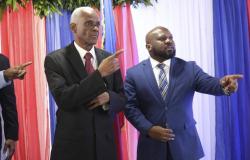In a post on Facebook, the National Center of Art Schools of Cuba (CNEArt) highlighted that De Saá, internationally recognized, has been “one of the most prominent and multifaceted figures of the art of dance in Cuba and her work solidly bases the creative and pedagogical movement of that art.”
The grand maître de ballet was a disciple of Alicia Alonso and for a long time director of the Fernando Alonso National Ballet School, adjunct professor at the Higher Institute of Art (ISA) and methodologist at the National Center of Art Schools (CNEArt).
Together with her sister Margarita de Saá and those known as the four jewels of Cuban ballet (Mirta Pla, Josefina Méndez, Loipa Araujo and Aurora Bosch), she was part of the group of dancers who accompanied the Alonsos in the refoundation of the National Ballet of Cuba after the triumph of the Revolution and, when several injuries forced him to leave his career, he devoted himself to teaching.
“The legacy of Maestro Ramona de Saá goes beyond the artistic. She is and will always be an example of dedication, of moral and ethical strength, of simplicity and altruism,” states the CNEArt publication.
Recipient of the title of honorary doctor in Art in 2000 and the National Prize for Artistic Teaching in 2002, she prepared generations of great dancers in her 45 years of connection with ballet teaching in Cuba and with the Cuban Ballet School.
According to the CNEArt note, by decision of the family, the remains of Ramona de Saá Bello will be cremated. Specific details regarding the posthumous tribute honoring her life and legacy will be shared soon.
Ramona de Saá Born in Havana-Cuba, on July 23, 1939. Forger of the current dance teaching system in Cuba. Disciple of Alicia Alonso, she studied at the Alicia Alonso Academy.
Founding dancer of the National Ballet of Cuba, she became one of its main young figures along with Loipa Araujo, Mirta Plá, Josefina Méndez, Aurora Bosch and Margarita de Saa and reached the rank of soloist.
He founded, under the direction of Fernando Alonso, the Ballet School of the National School of Art, assuming the direction of that institution, where the new promotions of Cuban dancers would be trained. She was the promoter and founder of the Dance Art Course of the Higher Institute of Art.
She directed the work of developing the first plans and study programs for the ballet profile and was its first teacher of Ballet Teaching Methodology.
When the Ministry of Culture was created, she was promoted to National Methodologist of the Directorate of Artistic Education (current National Center of Art Schools, CNEART).
In the midst of her intense work as a pedagogue and lecturer at a national and international level, she never stopped teaching classes at the National Ballet School. She has developed her activity in countries such as Angola, Argentina, Bulgaria, Bolivia, Brazil, Ecuador, Italy, Mexico, Nicaragua, Peru, the former USSR, Spain and Venezuela.
Member of the Dance Art Career Commission and the Scientific Council of this high house of studies. Her thorough understanding of the ideas of Alicia and Fernando Alonso and his ability to put these principles into practice constituted the most notable part of his work. On one occasion, he said he felt very responsible for the work of transmitting the immense legacy left by the great masters.
For his extensive pedagogical work, he received many recognitions: the Raúl Gómez García awards (from the Union of Cultural Workers), for Cuban Education, for National Culture; the Jesús Menéndez, José Tey and Alejo Carpentier medals (2001); the diplomas of Founder of the National School of Art and of Pedagogical Merit from the Ministry of Culture; the National Dance Awards (2006) and National Artistic Teaching Awards (2002), and the Félix Varela Order.
(With information from CNEArt)






